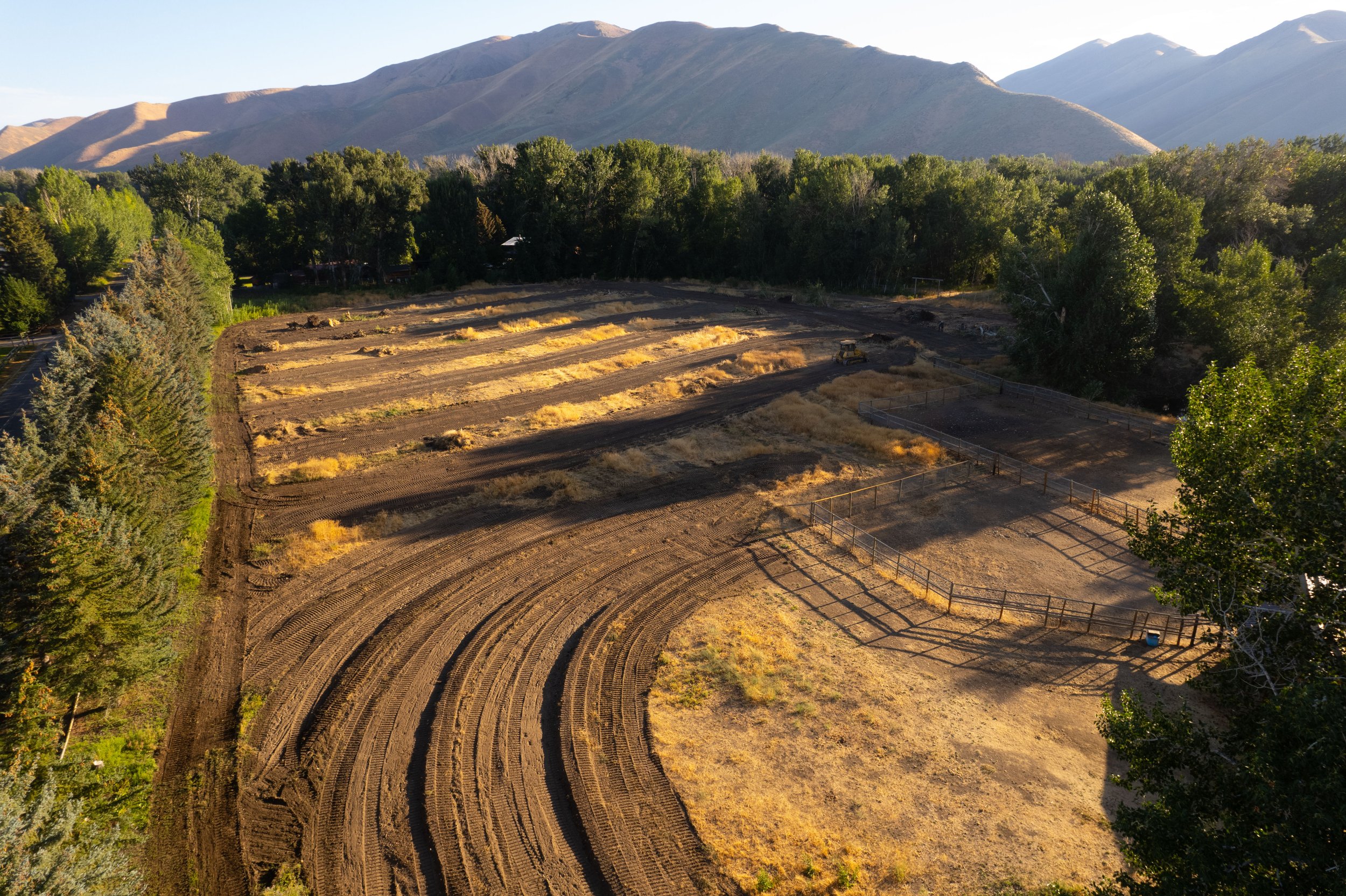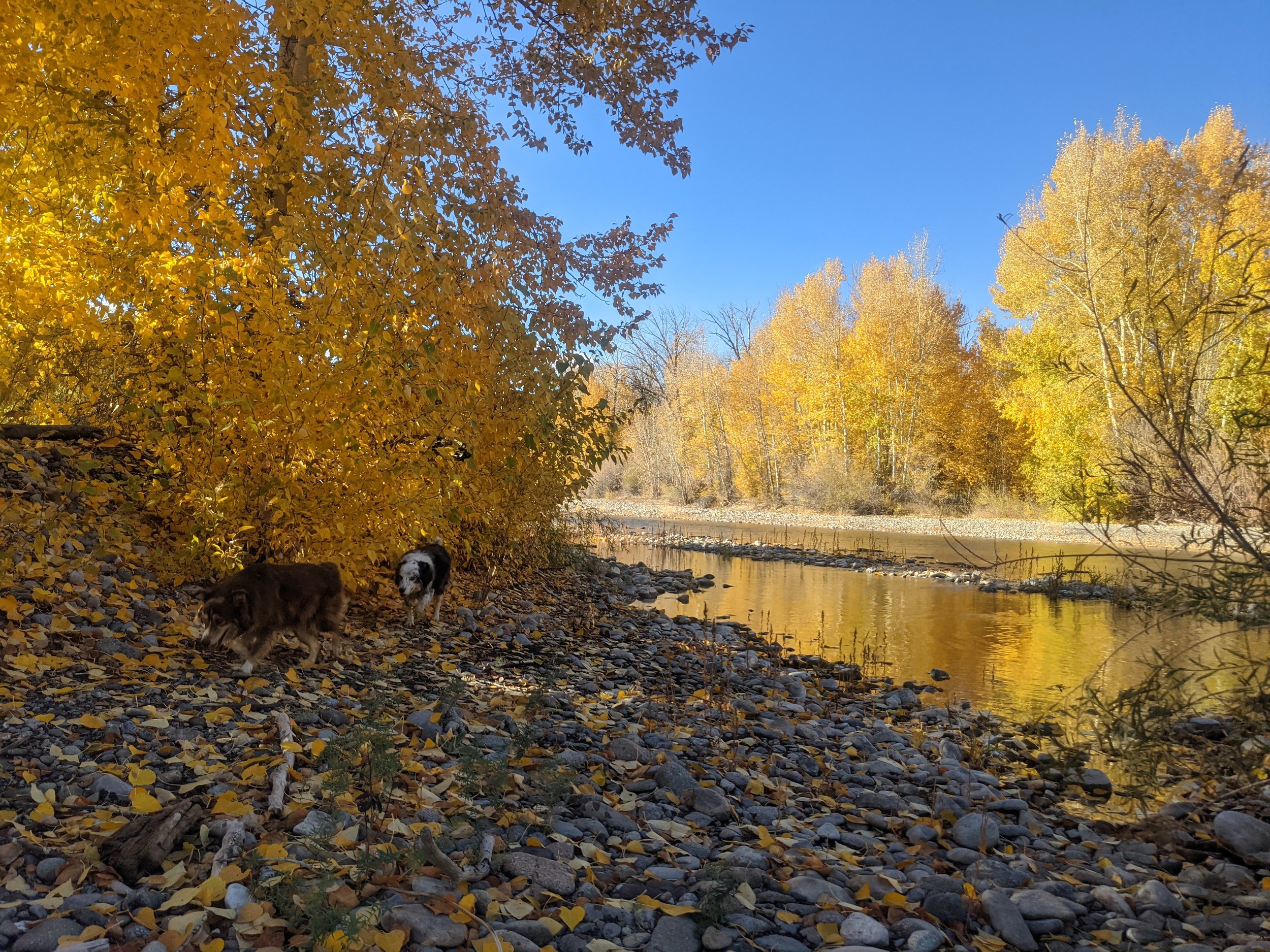
Purpose is central to everything we do
Inspired by unexpected life changes, we are converting a family horse ranch and alfalfa/hay farm to a carbon sequestering agroforestry oasis, preserving increasingly rare agricultural land in Idaho's Wood River Valley, protecting the riparian corridor, and experimenting and learning while striving for ecological and economic sustainability.
“Disenchanted with the failure of each silver-bullet techno-fix to the soil-climate-water-human health emergency, humanity is beginning to realize that the resource-generating system we need most has already been invented:
Photosynthesis is the production, and soil is the storage.”
~Ben Falk, The Resilient Farm and Homestead
OUR PRIORITIES
Water
The quantity and quality of water available for people, wildlife, and ecosystems is a critical issue, exacerbated by the climate crisis. Agriculture is historically part of the problem but can also be a powerful part of the solution.
Climate
The effects of climate change are devastating communities, crops, and disrupting the status quo. But there are solutions to the human causes of these changes. We have to face the problem head on and take action.
Community
Healthy, locally produced food increases community resilience and food security, while embodying less carbon miles than industrial ag products. We add value through partnerships and activities with local organizations and groups.
Biodiversity
Habitat destruction threatens ecosystems, causing countless extinctions and reducing biodiversity across the planet. Simultaneously, industrial agriculture and monocropping threatens our health and food security.
Image by Ben Stromback
Climate Change
Resilience and Remediation
By focusing on multi-story cropping systems, we are maximizing photosynthesis on every acre farmed, dramatically increasing the amount of carbon that can be sequestered on site. “Multi-story” means instead of a monocrop on a plot of land, we will have trees, then bushes under the trees, then herbs and other plants under those bushes. In certain areas, we’ll add annual grains to the alleys between trees. But the bulk of what we are planting are perennials, meaning they take even more carbon from the air to grow their woody trunks and branches while their roots sink carbon deep into the soil.
Two percent organic matter (carbon) in the top foot of soil represents more carbon than has been produced on the planet since the Industrial Revolution began. This amount of organic matter can be built in one growing season, easily, with sound land practices.
~Ben Falk, The Resilient Farm and Homestead
Water
Quality and Conservation
By utilizing passive water management systems, adapted from keyline design principles to maximize water retention and infiltration, eliminate runoff, and build soil health and depth, we will be both improving and increasing the water in our aquifer and river. There are countless examples around the world of how this approach to agriculture has transformed watersheds in a variety of ecosystems. By “slowing, spreading, and soaking” every drop of water that falls on the farm in the form of rain or snow, we will be able to reduce, and perhaps someday eliminate, our need to irrigate, while improving our crops’ resilience to increasing temperatures and more severe droughts as the effects of climate change progress. This same slowing, spreading, and soaking will also ensure that no water runs off the farm, taking soil and nutrients with it, into the nearby Big Wood River.
“It’s not a question of how much total rain falls on your land, it’s how much can infiltrate into your soils and then be stored there that counts. That storage ability is called effective rainfall. If we have low amounts of effective rainfall, we create our own drought…. When soil is enhanced at depth, the function of the entire watershed is improved, with benefits that extend to freshwater and marine environments far from the farm.”
-Gabe Brown, Dirt to Soil
Biodiversity
Pollinators, Wildlife, Crop Species Variety
If you look around a forest or undisturbed grassland, you can see countless types of plants all growing and thriving together in joyous chaos. This diversity of plants then supports a diversity of wildlife, insects, microbes, and more. By mimicking the diversity of nature, we can create bountiful food-producing systems that also benefit pollinators, wildlife, and the soil microbiome. The beauty of a varied production system also yields intangible benefits for people - imagine the satisfaction of walking an orchard row and being able to sample various types of fruits from the trees and bushes, while listening to the birdsong and hum of insects, and appreciating the ability to derive sustenance from a system in harmony with rather than at war with biodiversity.
In addition to the inherent benefits of a diverse cropping system, we are actively planting species beneficial to pollinators, installing boxes for kestrels and other birds of prey, conserving forested areas for wildlife, removing miles of old fence for the benefit of deer and our seasonal elk herd, and installing new Fish & Game recommended fencing only where needed to protect the orchards.
Community
Partnerships, Local Food Security, Giving Back
Being a positive part of our community is another core value.
One example of how we partner with local organizations includes working with Trout Unlimited, the Wood River Land Trust, and the Idaho Department of Fish & Game on a fish rescue in the summer of 2021, when the valley was hit particularly hard by the ongoing drought plaguing much the Western U.S. The Big Wood River dried up right above our ranch when the irrigation district diverted the remaining river flow to meet the call of senior water right holders. Seeing the river dry up was a nearly unheard of event - we’ve never seen it dry in our decades in the area and some others we’ve spoken with remember it perhaps one other time in history. We provided access to representatives and volunteers from the participating organizations who rescued fish from the deep pools along the banks of the river then relocated them several miles north where the river was still running. We lent a hand where we could, along with neighbors and a school group who came upon the scene. We were all a bit dumbstruck at the significance of seeing the Big Wood River dry up. That sight truly cemented our commitment to build drought resilience and water conservation into the foundation of all our future agricultural plans.
In the spring of 2023, the Wood River Land Trust completed a river restoration project on our property, in partnership with our neighbors across the river and support from the irrigation district and others. The team restored a dried up side channel that was blocked by woody debris from flooding several years ago. With the side channel blocked, noxious weeds spread in the former floodway and the main river channel narrowed and deepened, worsening downstream flooding during high-water events, reducing habitat for trout and other wildlife. In addition to restoring the side channel so it now flows during most of the summer and reduces the volume of spring runoff in the main channel, native riparian trees and shrubs were planted along the banks to improve habitat and bank stability.
We’re also pleased to be improving local food security with a system designed for resilience in the face of climate change. More local food production will also decrease the community’s reliance on produce shipped in from all over the world, reducing our collective carbon footprint. As our trees and shrubs get in the ground and start to mature and produce, we’ll be finding even more ways to give back.
Want to learn more about how regenerative agriculture addresses these priorities?
We’re still learning and are by no means the experts. But there are many who are. Check out our People page to learn about the pioneers in this arena and why this approach is so effective.
“It’s becoming clear that one of the most direct ways humanity can simultaneously triage the soil-climate-water-human health emergency is through rapidly building topsoil. As we begin to digest the news about the role of topsoil as linchpin in ecological health and human resource sustainability, we are waking up to a world of new possibilities, including global carbon negativity, agricultural yield improvements (while simultaneously reducing inputs), flood mitigation, and biodiversity rehabilitation. Only topsoil formation does all of these things with enough amplitude to matter. Building topsoil is a deep solution that doesn’t create a multitude of new problems while attempting to solve the first one; in contrast, it actually solves many problems synergistically.”
-Ben Falk, The Resilient Farm and Homestead










